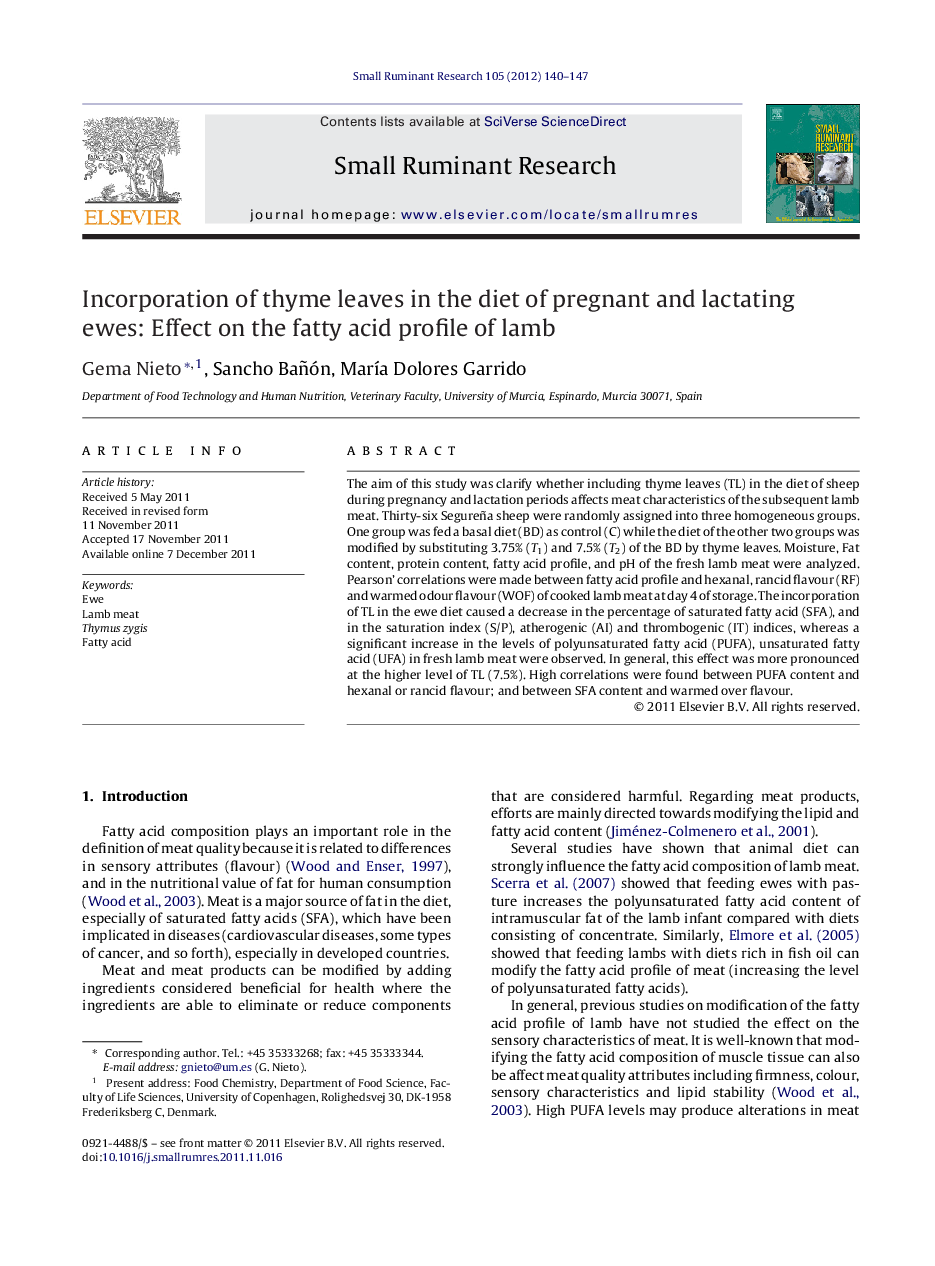| کد مقاله | کد نشریه | سال انتشار | مقاله انگلیسی | نسخه تمام متن |
|---|---|---|---|---|
| 5796130 | 1554387 | 2012 | 8 صفحه PDF | دانلود رایگان |

The aim of this study was clarify whether including thyme leaves (TL) in the diet of sheep during pregnancy and lactation periods affects meat characteristics of the subsequent lamb meat. Thirty-six Segureña sheep were randomly assigned into three homogeneous groups. One group was fed a basal diet (BD) as control (C) while the diet of the other two groups was modified by substituting 3.75% (T1) and 7.5% (T2) of the BD by thyme leaves. Moisture, Fat content, protein content, fatty acid profile, and pH of the fresh lamb meat were analyzed. Pearson' correlations were made between fatty acid profile and hexanal, rancid flavour (RF) and warmed odour flavour (WOF) of cooked lamb meat at day 4 of storage. The incorporation of TL in the ewe diet caused a decrease in the percentage of saturated fatty acid (SFA), and in the saturation index (S/P), atherogenic (AI) and thrombogenic (IT) indices, whereas a significant increase in the levels of polyunsaturated fatty acid (PUFA), unsaturated fatty acid (UFA) in fresh lamb meat were observed. In general, this effect was more pronounced at the higher level of TL (7.5%). High correlations were found between PUFA content and hexanal or rancid flavour; and between SFA content and warmed over flavour.
Journal: Small Ruminant Research - Volume 105, Issues 1â3, June 2012, Pages 140-147